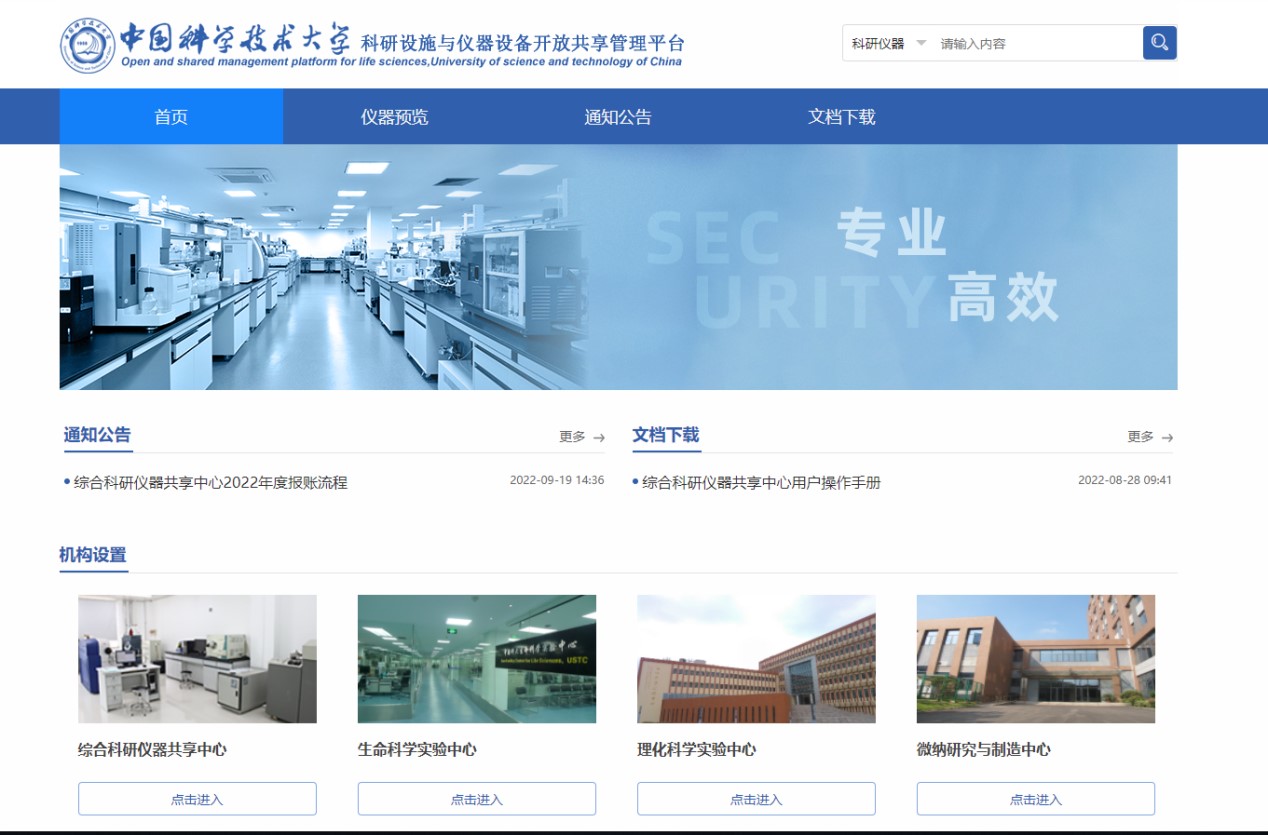China promotes sharing of scientific facilities, instruments
Major basic research facilities and large research instruments are important tools that advance sci-tech innovation and expand scientific knowledge.
At present, China is promoting the sharing of such facilities and instruments owned by centrally administered universities and scientific institutions to further improve utilization and optimize the distribution of innovative resources.
In recent years, the country has constantly improved its capacity in scientific research and enhanced investment in large research instruments.

Photo shows a screenshot of the website of an open and shared management platform for life science established by the University of Science and Technology of China.
According to incomplete statistics, centrally administered universities and scientific institutions across the country own around 130,000 sets of research instruments worth over 500,000 yuan ($71,635) each.
In 2014, China's State Council issued relevant documents which raised specific requirements and tasks on the sharing of major basic research facilities and large research instruments and set up trans-department, trans-field, and multi-level online management platforms for the sharing. Since 2018, centrally administered universities have been required to conduct an annual assessment of the sharing.
The 2022 assessment covered 345 organizations from 24 departments, which involved 86 major basic research facilities such as synchrotron light source, accelerator and wind tunnel, as well as 47,000 large research instruments worth over 500,000 yuan each, including electron microscopes, high-definition mass spectrometers, DNA sequencing machines, and terahertz power meters.
The assessment is a method that aims to improve sharing and utilization and better help China build itself into a science and technology giant, said Zheng Jian, an official with the China's Ministry of Science and Technology, adding that the assessment has lifted universities' awareness and positivity of sharing their sci-tech instruments.

Photo shows a transmission electron microscopy shared by the Songshan Lake Materials Laboratory in Dongguan, south China's Guangdong province. The device is worth over 10 million yuan. (Photo from Science and Technology Daily)
According to Zheng, less than 50 percent of instruments owned by Chinese universities were shared in 2014, and the figure now stands at over 90 percent. In the same period, the average annual machine-hour of their instruments surged from 500 to more than 1,300, and each machine was put into external services for over 200 hours on average each year, up from less than 50, Zheng added.
He told People's Daily that instrument sharing has avoided unnecessary purchases of 4,900 sets of devices over the past seven years, which saved 13.9 billion yuan. It also optimized the distribution of high-end instruments worth over 10 million yuan each, such as high-frequency nuclear magnetic resonance spectrometers, high-performance liquid chromatography mass spectrometry and extreme ultraviolet spectrometer systems.
The Chinese Academy of Sciences (CAS) has developed a management system for the sharing of large instruments, which enables scientists to check the availability of shared instruments and make reservations.

A researcher operates a field emission scanning electron microscopy in a testing center of Southwest Jiaotong University. (Photo from scol.com.cn)
The CAS Institute of Biophysics has already integrated its available instruments and established a platform for the studies of protein science back in 2003. Over the past years, the institute has become a leader in the country in terms of the sharing of sci-tech instruments.
Han Yugang, the director of the platform, told People's Daily that instruments shall be purchased according to actual need, and irrational purchases must be avoided. It would be a waste of money if expensive devices were used for simple experiments, he added.
The sharing of scientific instruments is not merely offering instruments to others. It is indeed a type of external technological service.
Over the years, the platform for the studies of protein science has established support teams consisting of 130 members. In particular, the cryogenic electron microscopy team has independently developed application software that significantly improves the utilization and efficiency of cryogenic electron microscopy (Cryo-EM), setting a good example for Chinese universities to build their own Cryo-EM platforms.
Photos
Related Stories
- Chinese political advisors discuss improving evaluation of sci-tech achievements
- Two Chinese achievements among top 10 breakthroughs of 2022 in physics
- Scientific issues critical to human society 2022 released
- China sees accelerated application of VR technology
- "Futuristic techs" showcased at 2022 World Internet Conference
Copyright © 2022 People's Daily Online. All Rights Reserved.









